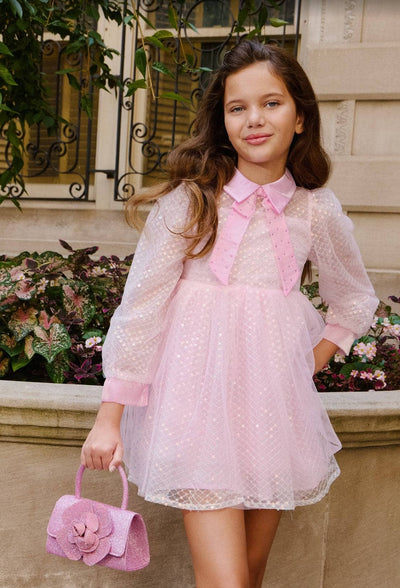Your Cart is Empty
Sibling Rivalry Over Clothes? 10 Parenting Tips to Handle It

Kids can get possessive about their clothes, turning mornings into a full-on sibling showdown. But don't worry, these little wardrobe wars are all part of growing up. With some thoughtful parental guidance, you can help dial down the drama and maybe even enjoy your coffee while it's still hot.
What is the Main Cause of Sibling Rivalry?
Before anything else, let’s understand the roots of sibling rivalry. Sibling rivalry often stems from competition for parental attention and resources. Children may feel the need to assert their individuality or seek validation, leading to conflicts over perceived favoritism.
Additionally, differences in personality, age, and developmental stages can heighten tensions, as each child manages their own unique needs and desires within the family dynamic. Understanding these causes is important for parents aiming to foster a more cooperative and supportive sibling relationship.
Manage Sibling Rivalry with These Parenting Tips
Sibling rivalry over clothes is common in households with multiple children, but a little strategy can make getting dressed smoother. Here are 10 tips for handling kids' clothing conflicts.
1. Set Clear Boundaries
Setting clear boundaries from the get-go can prevent many disputes. Make sure each child knows which items belong to them and which are off-limits.
- Label clothing with names or initials.
- Assign specific drawers or sections of the closet.
2. Rotate Clothes
To keep things fresh and exciting, consider rotating clothes between siblings. This works especially well if they are close in size.
- Store some clothes away and bring them out later as "new" options.
- Swap clothes during seasonal changes.
3. Encourage Individual Styles
Celebrate your children's individual styles by letting them choose their own outfits. This helps them develop a sense of identity and reduces the need to compete for the same items.
- Take them shopping for clothes they like, within reason.
- Discuss their preferences openly to ensure everyone feels heard.
4. Create a Clothing Pool
For families with similarly-sized kids, a shared clothing pool can work wonders. This communal approach can minimize fights over who gets to wear what.
- Establish a system where all clothes are available to everyone.
- Include versatile pieces that can be mixed and matched easily.
5. Reward Sharing Behavior
Positive reinforcement can go a long way in encouraging sharing and cooperation among siblings.
- Offer rewards for good behavior, such as extra screen time or a special treat.
- Praise them when they share without being prompted.
6. Implement a Turn System
If disputes arise over a particular item, implement a turn system. This ensures fairness and teaches patience.
- Create a schedule for high-demand items.
- Clearly state the rules and stick to them consistently.
7. Mediate Disputes Calmly
When conflicts do happen, it's essential to mediate calmly and fairly. Listen to both sides and help them come to a resolution together.
- Encourage open communication.
- Avoid taking sides to maintain neutrality.
8. Use Visual Cues
Visual cues can help younger children understand whose clothes are whose. This can be as simple as color-coding or using special hangers.
- Designate colors for each child.
- Use stickers or tags on hangers.
9. Educate on Budgeting
Teaching children about budgeting and the value of money can make them more appreciative of their clothing and less likely to fight over it.
- Involve them in the purchasing process.
- Explain the cost and care required for their clothes.
10. Lead by Example
Children often mimic their parents' behaviors. Show them how to share and compromise by demonstrating these values in your actions.
- Share items with your partner to set a positive example.
- Discuss the importance of fairness and respect.
11. Address Clothing Preferences
Understanding and respecting each child's clothing preferences can prevent conflicts and foster self-expression. Allow your children to make their own clothing choices to promote independence and individuality. Involve them in clothing decisions and purchases, and respect their preferences even if they differ from yours.
However, it's important to find a balance between letting children choose their clothes and ensuring practicality. Guide them towards appropriate choices for different occasions, offering options that meet their preferences while remaining functional.
Ultimately, encouraging children to express their individuality through clothing can boost their confidence and reduce conflicts. With thoughtful guidance, you can ensure their choices are both practical and aligned with their personal tastes.
12. Help Kids Appreciate What They Have
Teaching children to appreciate their clothes can reduce the desire to compete for new items.
- Gratitude Practices: Incorporate gratitude practices into your family routine to cultivate appreciation. Encourage children to express gratitude for their belongings by creating a gratitude jar where they can write notes about things they are thankful for. This simple activity can help them recognize and appreciate the value of what they already have.
- Mindful Consumption: Educate your children about mindful consumption and the impact of their choices. Discuss the importance of quality over quantity, highlighting how choosing fewer, high-quality items can be more fulfilling. Teach them about sustainable fashion and ethical shopping practices to foster a deeper understanding of responsible consumption.
Instilling gratitude and mindful consumption in children helps them value what they have and make thoughtful choices.
13. Teaching Conflict Resolution Skills
Equipping your children with conflict resolution skills can help them manage disputes on their own.
- Role-Playing Scenarios: Role-playing different scenarios can prepare your children to handle conflicts maturely. Act out common disputes and practice resolving them. Encourage empathy by having them switch roles.
- Guiding Them Through Conflicts: When conflicts arise, guide your children through the process of finding a solution together. Facilitate open discussions where each child can express their feelings. Help them brainstorm fair solutions and compromises.
Implementing these tips can create a more peaceful and cooperative environment among siblings. With thoughtful guidance and clear strategies, you can help your children navigate their wardrobe conflicts with ease.
Conclusion: Parenting Tips to Manage Sibling Rivalry Over Kids' Clothes
Sibling rivalry over clothes can be challenging, but with the right strategies, you can create a harmonious environment where each child feels valued and respected. By setting clear boundaries, encouraging individual styles, promoting teamwork, and teaching conflict resolution skills, you can help your children navigate these challenges and build strong, supportive relationships.
Shopping at Lola and The Boys can make sibling rivalry over trendy clothes a thing of the past. With a wide range of stylish and comfortable kids' apparel, each child can find something they love, reducing the competition and making mornings more peaceful.













